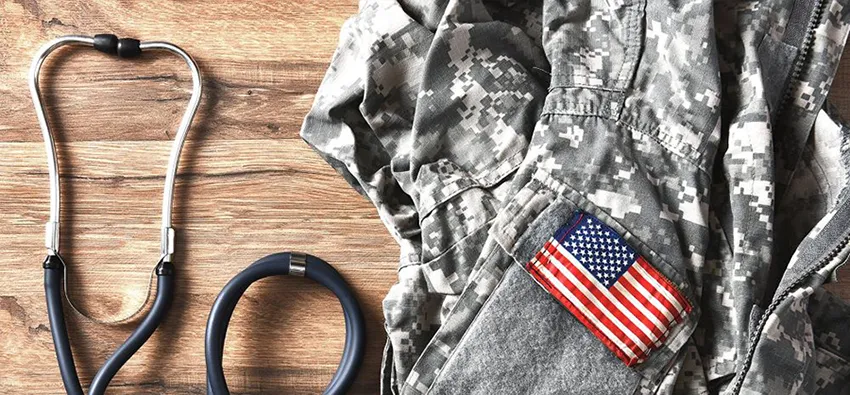Active Service Members and Veterans Can Now Sue the Federal Government for Medical Malpractice
By: Simon Law | October 1, 2020

For the last 70 years, there has been no legal recourse for active service members and veterans who were victims of medical malpractice committed by agents of the United States Government. Recent changes in federal law have now provided a process for active servicemembers and veterans to receive compensation for injuries received as a result of medical malpractice by United States Government physicians and military treatment facilities.
The Development of the Feres Doctrine
The Feres Doctrine, a byproduct of Feres v. United States, has historically precluded lawsuits by servicemembers and veterans under the Federal Tort Claims Act (FCTA) when the injuries arose out of or were in the course of an activity incident to service. 340 U.S. 135, 146 (1950). Under the FCTA, the claimant must demonstrate that (1) the claimant was injured or his or her property was damaged by a federal government employee; (2) the government employee was acting within the scope of his or her official duties; (3) the government employee was acting negligently or wrongfully; and (4) the negligent or wrongful act proximately caused the injury or damage of which the claimant complains. In Feres, two of the three Plaintiffs’ claims involved allegations of medical negligence, one of which involved surgical gauze being left inside the patient. Despite the trial court’s findings of “negligence in fact”, the United States Supreme Court held that the FCTA does not charge the Government with liability in these situations. Id. at 155.
Challenges to the Feres Doctrine
The Feres Doctrine has been challenged thousands of times under the premise that Feres unjustly limits the scope of the FCTA to preclude service members from suing the government, and therefore fails to provide them with an adequate remedy at law. Most notably, in United States v. Johnson, a 5-4 seminal case reaffirming the Feres Doctrine, Justice Scalia opined in his dissent that “Congress not only failed to provide such an exemption to the [FCTA for servicemembers], but quite plainly excluded it.” 481 U.S. 681, 692 (1987) (Scalia, J, dissenting)). Justice Scalia pointed out that provisions of the FCTA render the United States liable to all persons, including servicemembers. Id. at 693; see also 28 U.S.C. § 1346(b). Furthermore, the addition of the “wartime conditions” exclusions of 28 U.S.C. § 2680(j) only showed Congress’s intent in creating the special requirements needed for members of the military. Id. Justice Scalia was famously quoted in his dissent as noting that, “I have explained before that Feres was wrongly decided and heartily deserves the widespread, almost universal criticism it has received.” Id. at 700. However, Feres would survive another 30 years.
The SFC Richard Stayskal Medical Accountability Act
The Feres Doctrine received renewed scrutiny in 2019 with the SFC Richard Stayskal Medical Accountability Act. SFC Stayskal, a former Marine and decorated Army Green Beret, was diagnosed with pneumonia despite repeated trips to the emergency room with difficulty breathing and coughing up blood. A peer review of SFC Stayskal’s CT results showed doctors failed to inform him of abnormal findings consistent with a malignant mediastinal mass. SFC Stayskal is now suffering from arguably preventable stage-4 terminal cancer. Under the Act, which was signed into law on December 20, 2019 as a part of the National Defense Authorization Act for Fiscal Year 2020 (NDAA), servicemembers or their surviving spouses are now able to file a claim for medical malpractice at military facilities. The Act is not without some limitations, however.
Here are the broad strokes in regard to filing a claim:
- All claims proceed under administrative review, rather than a jury trial, conducted by the Department of Defense;
- There is a two-year statute of limitation with redress back to 2017;
- Claims valued at less than $100,000 are paid directly by the Department of Defense;
- Claims valued at more than $100,000 are paid by the Treasury Department;
- $400,000,000 has been allotted through 2030 to pay claims;
- There are no statutory caps on damages.
Until there is a consolidated system for filing claims, servicemembers can file their claims with the respective service they are being brought against at the following:
- Army: Claims should be presented to the nearest Office of the Staff Judge Advocate, to the Center Judge Advocate of the Medical Center in question, or with U.S. Army Claims Service, 4411 Llewellyn Avenue, Fort Meade, Maryland 20755, ATTN: Tort Claims Division.
- Navy and Marine Corps: Information, directions and forms for filing a claim may be found at https://www.jag.navy.mil/. Claims should be mailed to the Office of the Judge Advocate General, Tort Claims Unit, 9620 Maryland Avenue, Suite 205, Norfolk, Virginia 23511-2949.
- Air Force: Claims should be presented either at the Office of the Staff Judge Advocate at the nearest Air Force Base, or sent by mail to AFLOA/JACC, 1500 W. Perimeter Road, Suite 1700, Joint Base Andrews, MD 20762. POC: Medical Law Branch, AFLOA/JACC 240-612-4620 or DSN 612-4620
Contact Our Medical Malpractice Attorneys in St. Louis
The Simon Law Firm has successfully handled many medical malpractice cases in the past and is currently investigating these processes. If you or someone you love has suffered injuries as a result of medical malpractice by a military physician or treatment facility, please contact The Simon Law Firm immediately. We will take the time to work closely with you and seek full and just compensation for your injuries and losses.
— Matthew J. Gonzalez, Law Clerk


